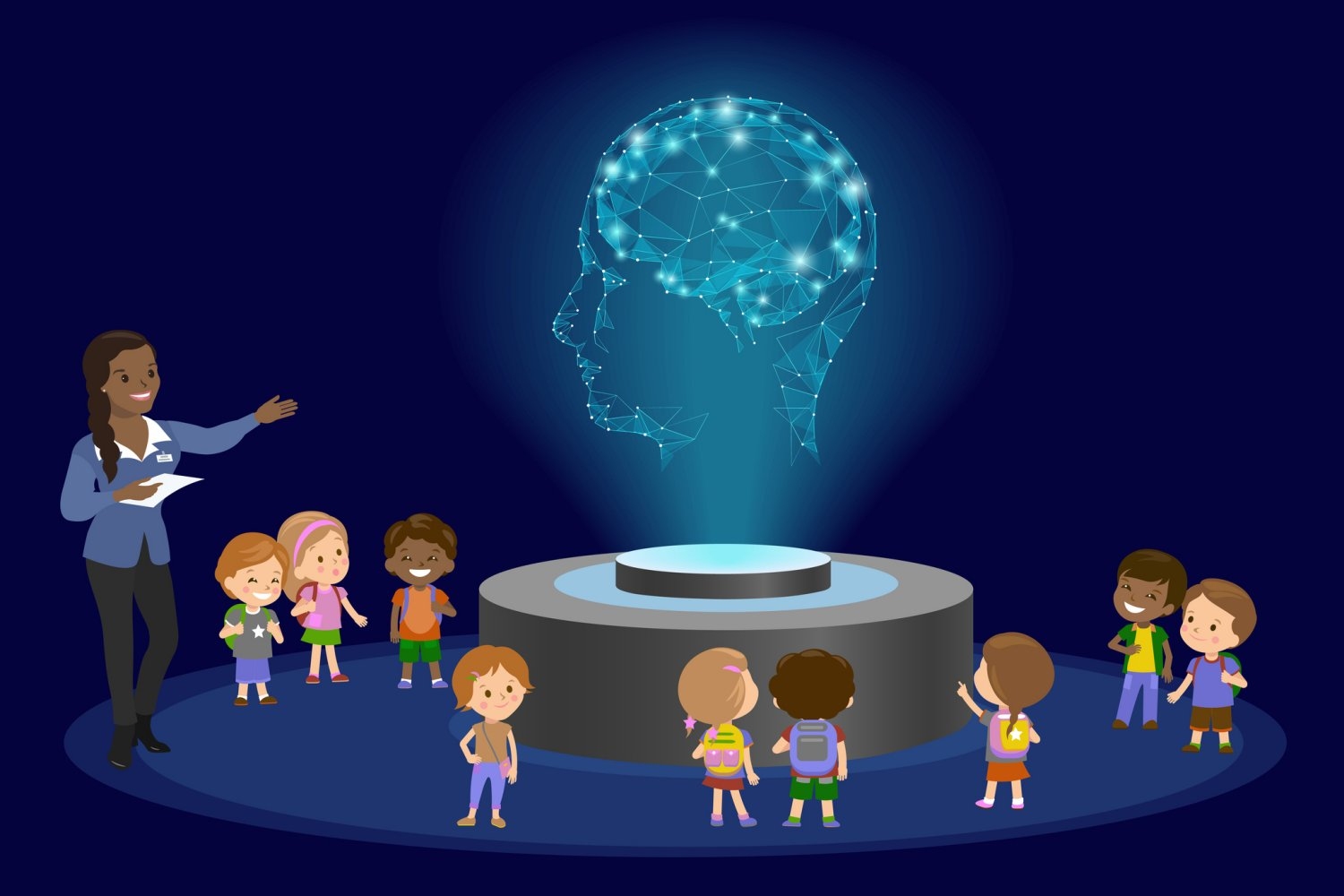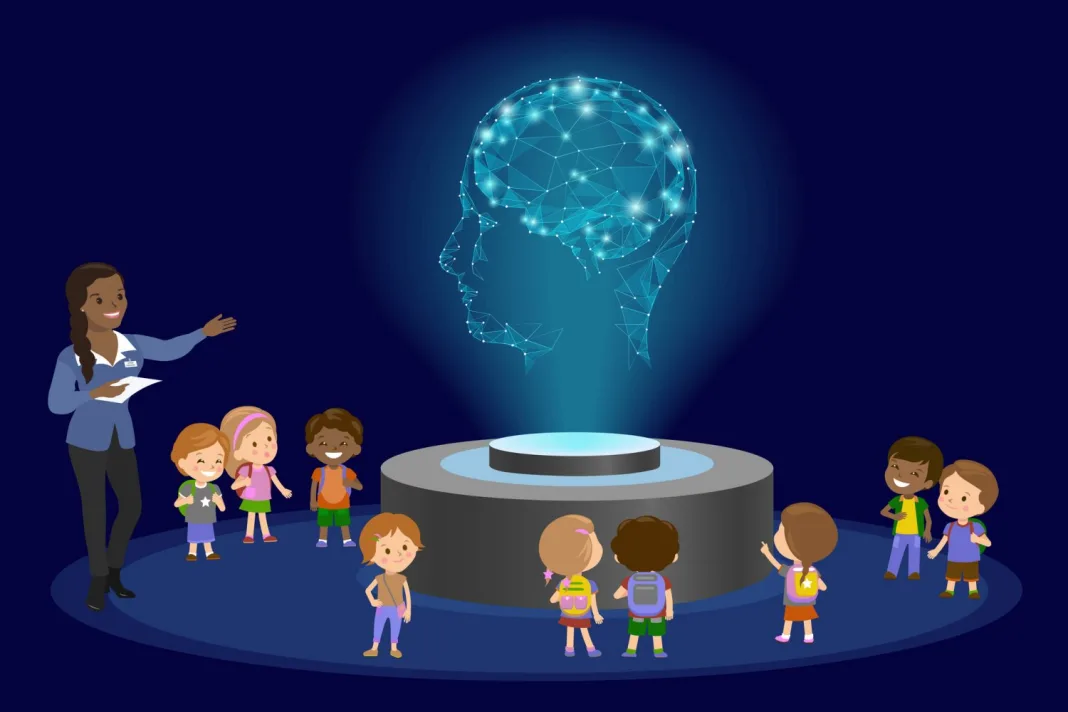
With the rapid advancement of generative artificial intelligence, teachers and school leaders are looking for answers to complicated questions about successfully integrating technology into lessons, while also ensuring students actually learn what they’re trying to teach.
Justin Reich, an associate professor in MIT’s Comparative Media Studies/Writing program, hopes a new guidebook published by the MIT Teaching Systems Lab can support K-12 educators as they determine what AI policies or guidelines to craft.
“Throughout my career, I’ve tried to be a person who researches education and technology and translates findings for people who work in the field,” says Reich. “When tricky things come along I try to jump in and be helpful.”
“A Guide to AI in Schools: Perspectives for the Perplexed,” published this fall, was developed with the support of an expert advisory panel and other researchers. The project includes input from more than 100 students and teachers from around the United States, sharing their experiences teaching and learning with new generative AI tools.
“We’re trying to advocate for an ethos of humility as we examine AI in schools,” Reich says. “We’re sharing some examples from educators about how they’re using AI in interesting ways, some of which might prove sturdy and some of which might prove faulty. And we won’t know which is which for a long time.”
Finding answers to AI and education questions
The guidebook attempts to help K-12 educators, students, school leaders, policymakers, and others collect and share information, experiences, and resources. AI’s arrival has left schools scrambling to respond to multiple challenges, like how to ensure academic integrity and maintain data privacy.
Reich cautions that the guidebook is not meant to be prescriptive or definitive, but something that will help spark thought and discussion.
“Writing a guidebook on generative AI in schools in 2025 is a little bit like writing a guidebook of aviation in 1905,” the guidebook’s authors note. “No one in 2025 can say how best to manage AI in schools.”
Schools are also struggling to measure how student learning loss looks in the age of AI. “How does bypassing productive thinking with AI look in practice?” Reich asks. “If we think teachers provide content and context to support learning and students no longer perform the exercises housing the content and providing the context, that’s a serious problem.”
Reich invites people directly impacted by AI to help develop solutions to the challenges its ubiquity presents. “It’s like observing a conversation in the teacher’s lounge and inviting students, parents, and other people to participate about how teachers think about AI,” he says, “what they are seeing in their classrooms, and what they’ve tried and how it went.”
The guidebook, in Reich’s view, is ultimately a collection of hypotheses expressed in interviews with teachers: well-informed, initial guesses about the paths that schools could follow in the years ahead.
Producing educator resources in a podcast
In addition to the guidebook, the Teaching Systems Lab also recently produced “The Homework Machine,” a seven-part series from the Teachlab podcast that explores how AI is reshaping K-12 education.
Reich produced the podcast in collaboration with journalist Jesse Dukes. Each episode tackles a specific area, asking important questions about challenges related to issues like AI adoption, poetry as a tool for student engagement, post-Covid learning loss, pedagogy, and book bans. The podcast allows Reich to share timely information about education-related updates and collaborate with people interested in helping further the work.
“The academic publishing cycle doesn’t lend itself to helping people with near-term challenges like those AI presents,” Reich says. “Peer review takes a long time, and the research produced isn’t always in a form that’s helpful to educators.” Schools and districts are grappling with AI in real time, bypassing time-tested quality control measures.
The podcast can help reduce the time it takes to share, test, and evaluate AI-related solutions to new challenges, which could prove useful in creating training and resources.
“We hope the podcast will spark thought and discussion, allowing people to draw from others’ experiences,” Reich says.
The podcast was also produced into an hour-long radio special, which was broadcast by public radio stations across the country.
“We’re fumbling around in the dark”
Reich is direct in his assessment of where we are with understanding AI and its impacts on education. “We’re fumbling around in the dark,” he says, recalling past attempts to quickly integrate new tech into classrooms. These failures, Reich suggests, highlight the importance of patience and humility as AI research continues. “AI bypassed normal procurement processes in education; it just showed up on kids’ phones,” he notes.
“We’ve been really wrong about tech in the past,” Reich says. Despite districts’ spending on tools like smartboards, for example, research indicates there’s no evidence that they improve learning or outcomes. In a new article for article for The Conversation, he argues that early teacher guidance in areas like web literacy has produced bad advice that still exists in our educational system. “We taught students and educators not to trust Wikipedia,” he recalls, “and to search for website credibility markers, both of which turned out to be incorrect.” Reich wants to avoid a similar rush to judgment on AI, recommending that we avoid guessing at AI-enabled instructional strategies.
These challenges, coupled with potential and observed student impacts, significantly raise the stakes for schools and students’ families in the AI race. “Education technology always provokes teacher anxiety,” Reich notes, “but the breadth of AI-related concerns is much greater than in other tech-related areas.”
The dawn of the AI age is different from how we’ve previously received tech into our classrooms, Reich says. AI wasn’t adopted like other tech. It simply arrived. It’s now upending educational models and, in some cases, complicating efforts to improve student outcomes.
Reich is quick to point out that there are no clear, definitive answers on effective AI implementation and use in classrooms; those answers don’t currently exist. Each of the resources Reich helped develop invite engagement from the audiences they target, aggregating valuable responses others might find useful.
“We can develop long-term solutions to schools’ AI challenges, but it will take time and work,” he says. “AI isn’t like learning to tie knots; we don’t know what AI is, or is going to be, yet.”
Reich also recommends learning more about AI implementation from a variety of sources. “Decentralized pockets of learning can help us test ideas, search for themes, and collect evidence on what works,” he says. “We need to know if learning is actually better with AI.”
While teachers don’t get to choose regarding AI’s existence, Reich believes it’s important that we solicit their input and involve students and other stakeholders to help develop solutions that improve learning and outcomes.
“Let’s race to answers that are right, not first,” Reich says.






